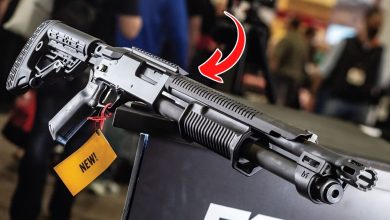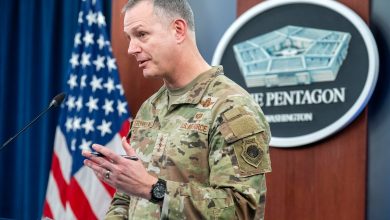In WWII, the ‘Tokyo Express’ was tough to beat. One man changed that.

World War II was marked by numerous technical advances and battles in which they played a pivotal role. Relatively overlooked but having an importance of its own was the destroyer as used in the Solomons campaigns of 1942 to 1943.
The naval struggle was generally fought at night, pitting Japanese destroyers ferrying reinforcements to contested islands or evacuating forces from untenable posts, versus American counterparts trying to intercept them.
Nicknamed the “Tokyo Express” by their opponents, the Japanese “tin cans” acquired the grudging respect of the Americans for their daring and ingenuity, their deadly 24-inch Type 93 “Long Lance” torpedoes and what seemed to be an uncanny Japanese talent for operating by night.
In 1943, however, American destroyers began receiving a new, more effective centimetric screen grid radio detection and ranging, or SG radar, along with a new generation of captains adjusting their tactics to take advantage of the new developments.
In the vanguard of those adopting the new weapons systems to challenge the Tokyo Express anew was Cmdr. Frederick Moosbrugger.
Born in Philadelphia, Pennsylvania, on Oct. 9, 1900, Moosbrugger entered the U.S. Naval Academy at Annapolis, Maryland, on June 25, 1919, graduating on June 8, 1923. His subsequent assignments included two three-year stints as an instructor at the academy and service aboard the heavy cruiser Houston starting June 1, 1934, with then-President Franklin D. Roosevelt as a passenger and attending the opening of the Golden Gate Bridge in San Francisco on May 28, 1937. On April 28, 1941, he got command of his first ship, the destroyer McCall.
McCall was escorting the aircraft carrier Enterprise toward Wake Island on Dec. 7, 1941, when word came in of the Japanese attack on Pearl Harbor, Hawaii. The small carrier task force did not return to Pearl until Dec. 10, but it was time enough for Enterprise’s aircraft to catch the Japanese submarine I-70 still snooping in the area and summarily sink it.
Between May 1942 and September 1943, Moosbrugger led destroyers in the Solomon Islands. In early August 1943 he led Destroyer Division 12 (DesDiv 12) aboard Dunlap, whose captain was Lt. Cmdr. Clifton Iverson, along with destroyers Craven and Maury.
Munda had been the latest objective, and the last previous attempt to derail the Express using patrol torpedo (PT) boats on the night of August 1-2 had failed — the only result being PT-109 rammed and sunk by destroyer Amagiri, although its skipper, Lt. John Fitzgerald Kennedy, survived to later become president.
Munda fell into Allied hands on Aug. 5, but word came in about another Express departing Port Vila for Kolombangara Island, and this time the job of interception was handed to Moosbrugger. He was reinforced with three more ships of Destroyer Division 15 (DesDiv 15), led by Cmdr. Rodger Whitten Simpson aboard the destroyer Lang (Cmdr. John Lester Wilfong as captain), with destroyers Sterett and Stack.
For the first time in the war, U.S. Navy destroyers were not escorting cruisers, giving them independence to work out their own tactics. Moosbrugger’s were to enter Vella Gulf with DesDiv 12 in column to the left of the formation and DesDiv 15 two miles to the right and a little farther behind. If they spotted enemy destroyers, DesDiv 12, which had long been zealously training at night fighting, would fire torpedoes while DesDiv 15, whose ships had new 40 mm anti-aircraft gun batteries, would follow up with gunfire.
At 1130 hours the force departed Tulagi and when it reached Kula Gulf, Moosbrugger ordered all ships into battle formation. Reaching and probing Blackett Strait, it headed due north following Kolombangara’s coast, on a rainy night that would have handicapped both sides if not for the Americans’ radar advantage.
Shortly before midnight, Dunlap’s radar made first contact with the enemy 10 miles away, which soon materialized into four “pips” on the screen. As Moosbrugger’s torpedo crews readied their weapons, he deactivated his unreliable magnetic exploder devices, while relying on the flash hiders of his improved “fish.” Moosbrugger got on the talk-between-ships system and ordered his division to “Stand by to fire torpedoes!”
Approaching from the north was Japanese Destroyer Division 4 (DesDiv 4) comprised of Hagikaze — flying the pennant of Capt. Kaju Sugiru — Kawakaze and Arashi, trailed by Shigure. The latter, under Cmdr. Tameichi Hara, was a relatively old ship and had been falling behind the formation. Its navigation officer, Lt. Yoshio Tsukihara, asked Hara, as the commander later recalled in his book “Japanese Destroyer Captain”: “Sir, we are lagging 1,000 meters behind Kawakaze. Shall we use the overboost to gain back our lost 500 meters?”
“No,” the veteran Hara replied. “This is good enough. To hell with the described 500-meter distance. Don’t overboost the engine!” Suspecting trouble, Hara ordered Shigure ready for action with guns and torpedoes trained left, where visibility was worst. Just then a lookout cried out: “White waves! Black objects! … Several ships heading toward us!”
At 4,000 yards distance, Moosbrugger ordered his DesDiv 12 ships to fire and 24 torpedoes — eight per ship — were loosed in 63 seconds. Two hit Hagikaze, knocking out its radio and throwing the column into confusion. Three torpedoes struck Arashi and two more hit Kawakaze, after which Moosbrugger pulled back to let Simpson’s destroyers finish the targets with gunfire.
Firing ceased as all three Japanese destroyers went down, along with 356 seamen and 685 troops. Behind them, Shigure dodged to the right, letting lose eight torpedoes, but hitting nothing.
In contrast, three or four American torpedoes bore on Shigure and put a two-by-two-foot hole in its rudder. It failed to explode, but it and the soldiers on board handicapped its further usefulness, so Hara made smoke and withdrew, requesting further instructions from headquarters at Rabaul.
“Return to base,” came the reply. “Ask Kolombangara to rescue survivors.”
Remarkably, 310 Japanese troops, including Capt. Sugiura, drifted to shore on Vella Lavella, from which they were transferred to Kolombangara. Henceforth, however, there would be no more Tokyo Express troop runs to that island.
Of the 24 torpedoes Moosbrugger’s destroyers launched, one-third had struck their targets.
“The hits on Arashi and Kawakaze were phenomenal,” Hara wrote after the war in what he called “a perfect American victory.”
“Never before had I seen such marksmanship by the enemy,” he continued.
The U.S. Navy agreed. On Sept. 10, 1943, Adm. William Frederick Halsey awarded Moosbrugger the Navy Cross, which was also presented to Dunlap’s Lt. Cmdr. Iverson and Sterett’s Lt. Cmdr. Frank Gardner Gould. Adm. Chester William Nimitz, commander in chief of U.S. Pacific Fleet, dubbed the Vella Gulf battle “a little classic of naval warfare.”
Moosbrugger also got congratulations from an Annapolis classmate, Lt. Cmdr. Arleigh Albert Burke: “Dear Moose, your battle the other night will go down in history as one of the most successful actions ever fought. It was splendidly conceived and marvelously executed.” Burke was more than just inspired by the precedent it set. On the night of Nov. 25, 1943, he led his own squadron in an equally successful ambush off Cape St. George that sank another three out of five Japanese destroyers engaged.
Moosbrugger fought no comparable action again, but rose steadily in his career, reaching the rank of captain at the U.S. Naval School, General Line, Naval Base at Newport, Rhode Island, on April 5, 1946. He made rear admiral on June 1, 1951, and in 1952 he served as commander of the Military Sea Transportation Service, Pacific Area, based at San Francisco, California. He retired as a vice admiral on Oct. 1, 1956. Besides the Navy Cross, he received the Distinguished Service Medal and the Legion of Merit with “Valor” device.
Moosbrugger died at the San Diego Naval Hospital on Oct. 1, 1974. He was buried alongside his wife, Dorothy (Britt), at Fort Rosecrans National Cemetery, San Diego, leaving behind three sons, Frederick Britt, Edward Arthur and David Britt. His name was given to destroyer DD-980.
Read the full article here







